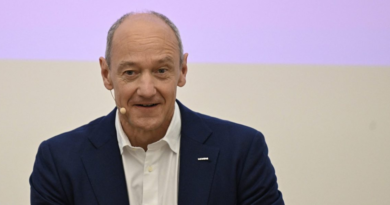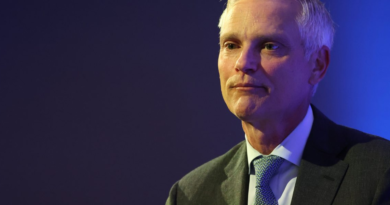I’ve been practicing medicine at a renowned institution for 40 years. Society isn’t ready for us to reverse the aging process across an entire population
Within the past couple of years, in shots heard literally and figuratively around the developed world, a new class of drugs called GLP-1 receptor agonists, so-called “weight loss drugs,” captivated the world to such an extent that their primary manufacturers, Eli Lilly and Novo Nordisk, can’t keep up with the demand for them. People who were morbidly obese or just slightly overweight suddenly saw the possibility that they could have the svelte body image they wanted. The market for these drugs is expected to reach $100 billion in 2030, after manufacturing finally catches up. Senator Bernie Sanders, no fan of pharmaceutical lobbyists, recently said that demand for these drugs could eventually bankrupt the Medicare program.
If the scourge of obesity—which affects more than two in five adults in the U.S.—can be reversed so suddenly by a new development in medical science, it takes no great stretch of the imagination to contemplate the day when another ubiquitous “affliction” can be similarly addressed: aging. Already, research on the primary drivers of aging abounds. Stem cell and proteostatic dysfunction, telomere erosion, DNA damage, mitochondrial dysfunction, inflammation…all are the subjects of numerous studies, and the work advances each day. In just one example, researchers from Cold Spring Harbor Laboratory in New York have recently discovered that T cells in the body can be reprogrammed to slow down and even reverse aging. Gene splicing could also play a role in the future.
The race to ‘cure’ aging
As a physician, I believe there may be a biological mechanism that triggers the onset of aging and that with enough research, we will discover what it is. It could be something as simple as blocking a protein that turns on the aging clock and at the same time facilitates cellular repair or lessens the chance for mutation, as I postulate in my novel The Plasma Cell Report. Such enzymes could be blocked with either naturally occurring antibodies arising from a disease or laboratory-produced monoclonal antibodies.
With the advent of AI, which has made it possible to input millions of data points and apply logical algorithms into mega computers, current research will inevitably speed up. The work of thousands of scientists may soon be compressed into ever-shorter periods of time—even a day. There are whole departments and institutes around the world investigating this, as well as, I strongly suspect, Big Pharma. The day we “cure” aging is perhaps not far off.
What could go wrong? Plenty
First, even as we search for this coveted cure, it would be irresponsible not to ask: Does Earth really have the natural resources to support an ever-expanding population? No matter which side of the fossil fuel debate you are on, these resources will eventually run out. Since solar and wind are insufficient, we are now turning back to nuclear. Even if it continues to prove safe and reliable, nobody can predict how long it will take to safely build enough nuclear plants to support an ever-expanding population that relies on more and more data centers hungry for power. Nor has anyone sufficiently delved into the question of who would pay for it and what the expected ROI might be.
Then there are the questions of food and water. If the war in Ukraine has taught us anything, it is how fragile our food chain is. This may seem like a distant, dystopian concern to most in the U.S., but let’s not forget that water wars are already brewing among seven western states, including California. Drought, driven by climate change (which compounds the food and water conundrum) is one cause. Overuse by an expanding population, and migration, are others.
Similar dilemmas exist for all infrastructures that will be needed to support a population that, as mathematics would have it, could double every 20 years. Highways, airports, housing—which is already in short supply—could not keep up. I for one am deeply skeptical that we could keep up with the demand, or even the basic needs.
Aging assumptions
Then there are the social issues such as entitlements. If people choose not to work beyond 40 years, how long could they be carried on Social Security or Medicare? Where would funding for these programs come from? Could life sentences for crime still be reasonable? Would a sociopathic murderer who never ages ever become less dangerous to society? How about lifetime terms for our Supreme Court Justices? Would that still be fair? These issues would have to be examined and perhaps revised as well. If such a “cure” was found, how would it be shared with populations worldwide, including those less privileged who may not have access to said cure?
In chasing eternal youth, we also have to consider moral issues. Many believe there is a divine plan that includes the stages of life. Should we be interfering with it? Even if human life is just a result of a big bang, ascendance from a primordial swamp, and billions of years of evolution, doesn’t nature know better? If there was an ever-expanding population that couldn’t be supported, would it have to be controlled by governments through controlled birth and controlled death in a Soylent Green world?
Finally, consider the infinitely human and universal cycle of life defining the shared experiences that bind us as a species on planet Earth. The joy of birth, of watching our children grow up as we grow older. The sweet nostalgia for the things we could do when we were young that lends us greater depth and perspective as we mature. Though painful at times, the mere fact of aging brings infinite meaning that many would not want to give up.
I will leave you with one more quote that I believe is relevant. J. Robert Oppenheimer, the father of the atomic bomb said, “The deep things in science are not found because they are useful; they are found because it is possible to find them.”
More reading:
The opinions expressed in Fortune.com commentary pieces are solely the views of their authors and do not necessarily reflect the opinions and beliefs of Fortune.



